About Aloo Puri
Aloo puri is a hearty, satisfying vegan breakfast that is a favorite weekend treat at our house. Aloo (Hindi for “potato”) refers to the curry portion of the meal, while Puri (or poori) refers to the the crisp fried breads the curry is served with. This recipe comes from my mother-in-law, and it is one of her most treasured family recipes. She considers it her best aloo sabzi recipe (sabzi means “cooked vegetables”), and the whole family simply adores it. The combination of aloo puri with sooji halwa is very popular in North India. Usually this meal would be served for breakfast, but you can have it any time of the day. While the recipe takes a bit more time than I usually have to spend on breakfast for a regular weekday, I would eat this and Maharashtrian Poori Bhaji every weekend if I could. I might not get anything done afterwards – it’s a heavy meal – but the flavor might just be worth it! In most Punjabi homes, Sunday breakfast includes some kind of fabulous bread like in this aloo poori, bread pakora, or different Paratha like:
Aloo ParathaOnion ParathaGobi ParathaPaneer Paratha
The most important ingredient in this delightful curry is ajwain (carom seeds). They not only subtly flavor the whole dish, they are also an excellent digestive aid with myriad other health benefits. The cozily spiced potato sabzi is served steaming hot with freshly puffed Puri, straight out of the kadai, along with some chopped onions and lemon wedges. Once you try this amazing Punjabi breakfast, I have a feeling you’ll fall in love. Want more such recipes? You can also check this South Indian style Poori Masala for a different regional take on this famous breakfast.
How to Make Aloo Poori
Prepare Aloo Sabzi
- Heat oil in a 2 litre stovetop pressure cooker. Add 1 teaspoon ajwain (carom seeds) and fry them till they splutter.
- Now add ⅓ cup chopped onions (about 1 medium-sized onion, or 50 grams).
- Sauté onions on medium-low heat until they soften.
- Then add 2 teaspoons finely chopped ginger (1-inch ginger), 1 teaspoon finely chopped garlic (2 to 3 small to medium garlic cloves) and 1 to 2 chopped green chillies. Sauté for a few seconds till the raw aroma of the ginger and garlic goes away.
- Add 1 heaped cup chopped tomatoes (about 2 medium to large tomatoes or 200 grams).
- Stir and mix well.
- Sauté till the tomatoes become soft and pulpy.
- Add ½ teaspoon turmeric powder, 1 pinch asafoetida (hing) and 1 teaspoon red chilli powder or ½ teaspoon cayenne pepper. If you are gluten free, please be sure to check the label of your asafoetida. Many commercially available brands are processed with wheat.
- Mix well.
- Now add 2 heaped cups peeled, diced potatoes (about 5 medium-sized potatoes or 350 grams).
- Stir and mix well.
- Add 2 cups of water.
- Next add salt to taste and mix well.
- Pressure cook for 3 to 4 whistles on medium heat, or till the potatoes are done (fork tender). When the pressure drops naturally in the cooker, then only open the lid.
- Check to see if the potatoes are tender. In the below photo, the potatoes are cooked well.
- Open the lid and mash a few cooked potatoes against the sides of the cooker.
- Simmer for a few minutes to thicken. The starch from the potatoes will act as a natural thickener for the gravy.
- Once done, sprinkle in ½ teaspoon garam masala powder.
- Also, add 1 teaspoon dry mango powder (amchur powder). Mix well and garnish with some coriander leaves.
- Serve the Aloo Sabzi hot with Puri.
How to make Make Puri
Make Poori Dough
- Knead 2.5 to 3 cups whole wheat flour (atta) into a stiff dough adding water as needed and 1 teaspoon oil.
- Make small balls of the dough.
- Apply oil to the dough ball. The reason you apply oil instead of dusting with flour is so that while frying, the oil stays clean and you won’t see dark burnt flour particles inside the oil.
- Roll the dough evenly into circles that are neither too thin nor thick.
- Place the rolled poori on a plate and cover with a clean kitchen towel so they don’t dry up.
Fry Puri
- Heat oil in a deep frying pan or kadai. When the oil is sufficiently hot (it should bubble around the handle of a wooden spoon), then drop a small dough ball into the oil. If the dough ball rises steadily and briskly to the top, then the oil is sufficiently hot to fry the puri. Otherwise, allow it to continue to heat up before frying the puri. Troubleshooting Tip: If the dough ball rises slowly or is still at the bottom, then the oil is cold; if it rises super fast, then the oil is too hot.
- Add one puri at a time. It will puff up soon. Gently nudge with a slotted spoon which helps in puffing the puri evenly.
- Once the bottom side is golden, then turn over the puri and gently press it down with a slotted spoon, moving it in a circular motion. Fry the puri till golden brown all over. Remove the poori to a plate lined with paper napkins to remove excess oil. Fry all pooris this way. If the oil becomes too hot, then lower the temperature by reducing the heat and vice versa. Fry the puri in batches.
- Serve the hot puri with the aloo sabzi, alongside sliced onions and some lemon wedges. Please be sure to rate the recipe in the recipe card or leave a comment below if you have made it. For more vegetarian inspirations, Sign Up for my emails or follow me on Instagram, Youtube, Facebook, Pinterest or Twitter. Palak Puri | Palak Poori Luchi Recipe | Bengali Luchi Alur Dom | Bengali Aloo Dum This Aloo Puri Recipe from the archives first published in May 2012 has been republished and updated on November 2022.
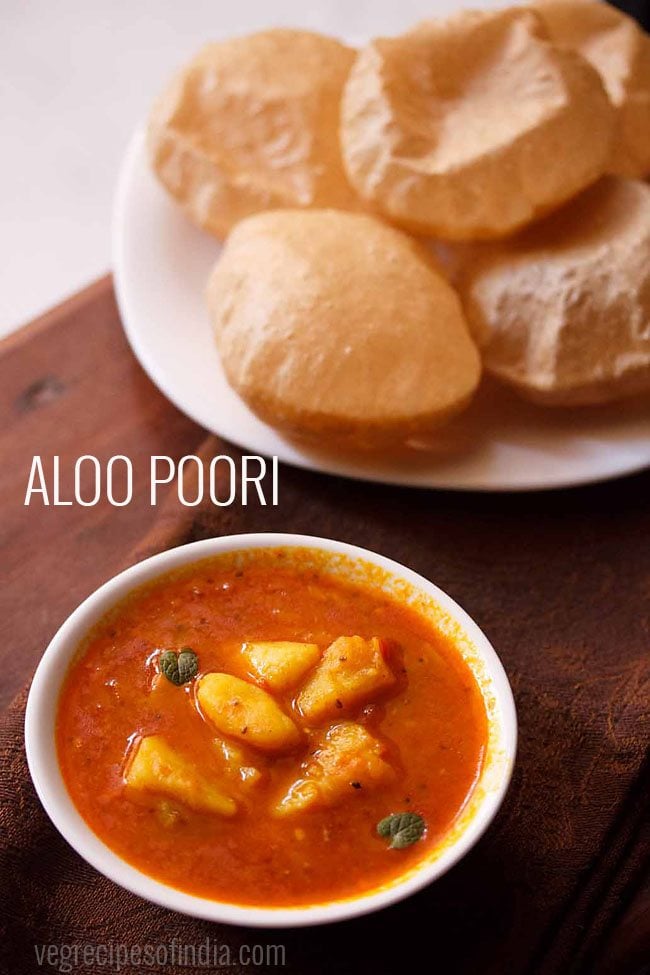
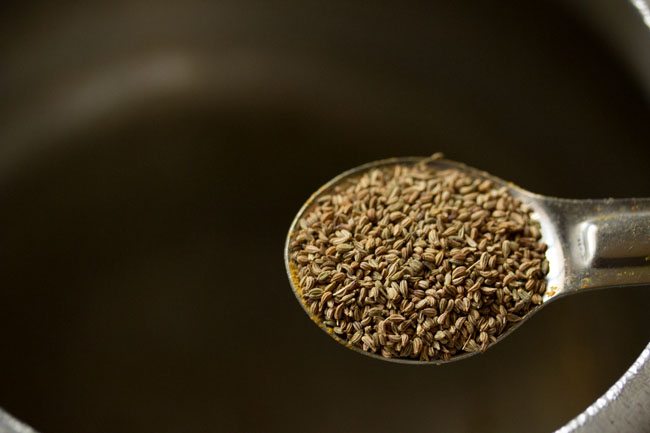
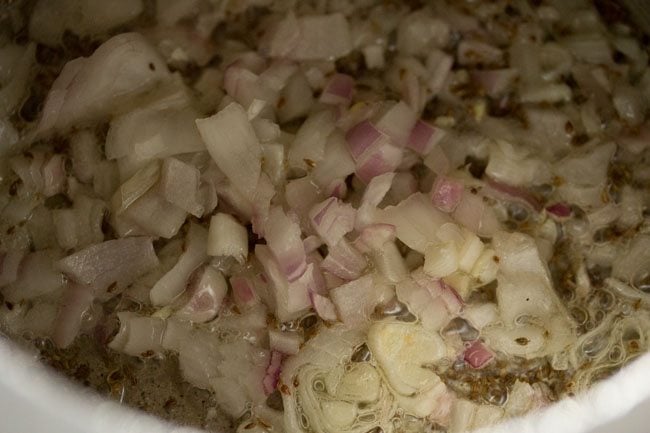
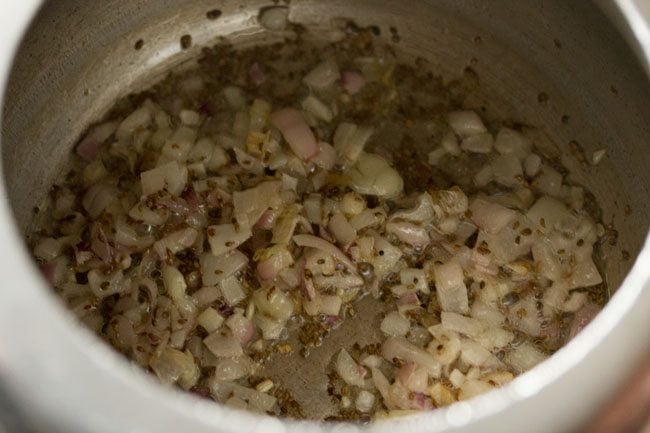
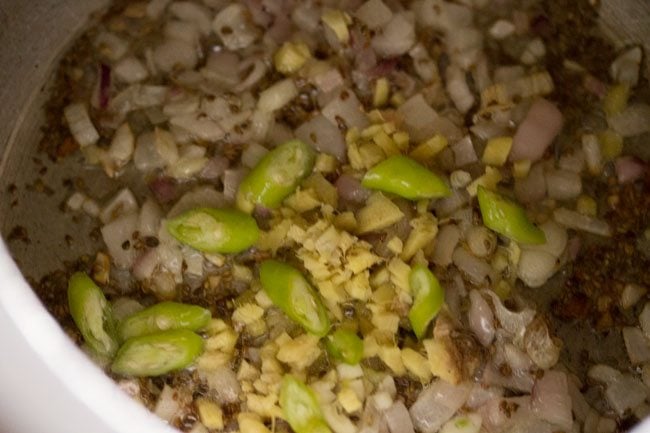

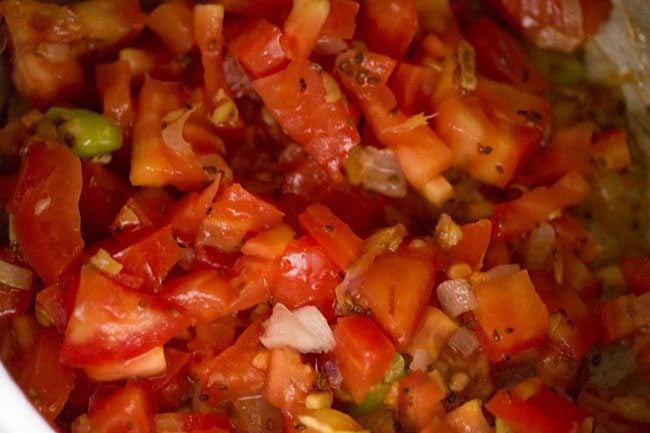
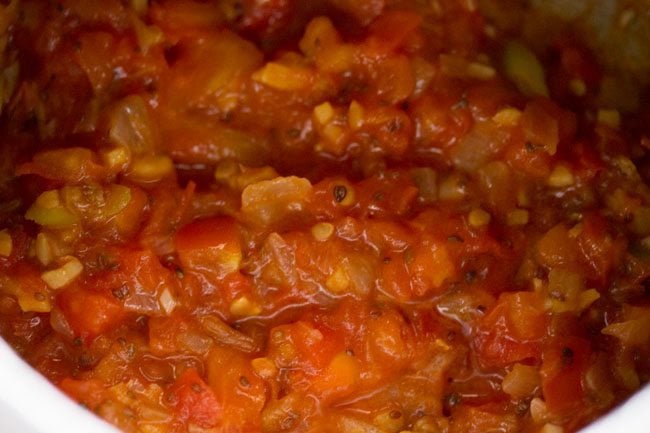
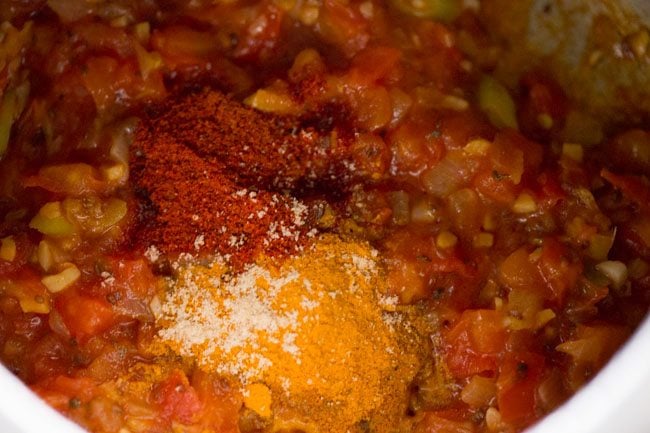
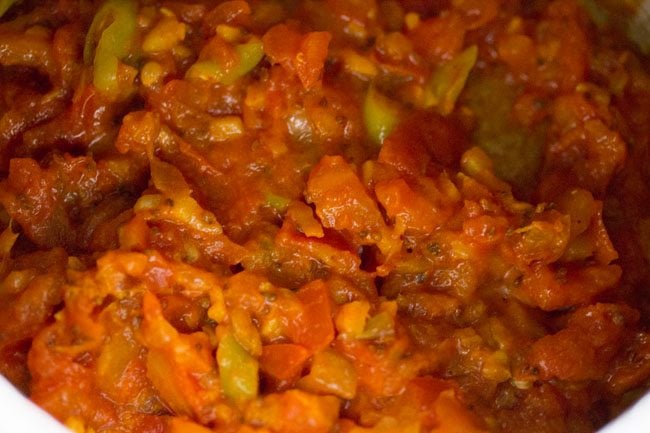
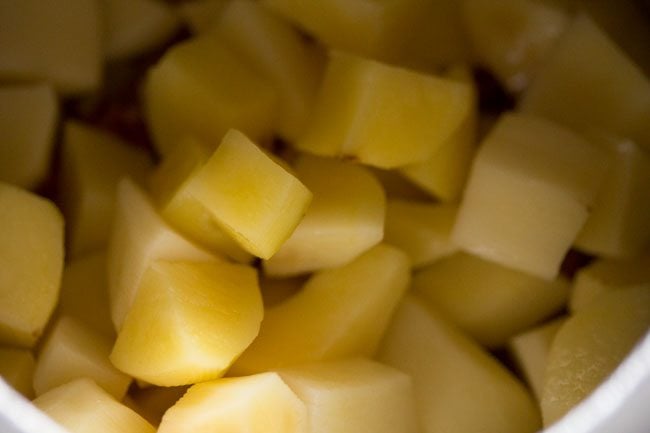
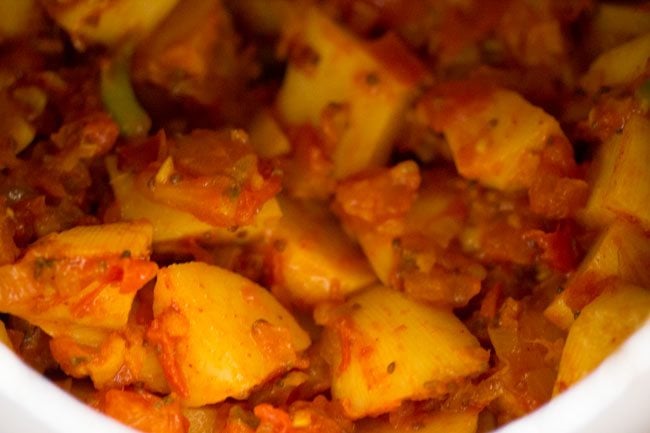


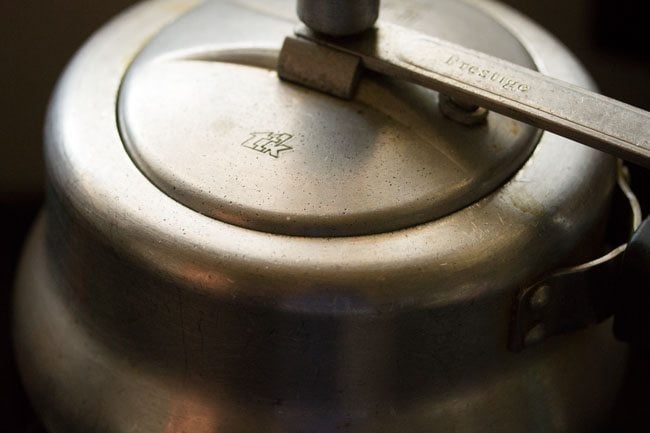
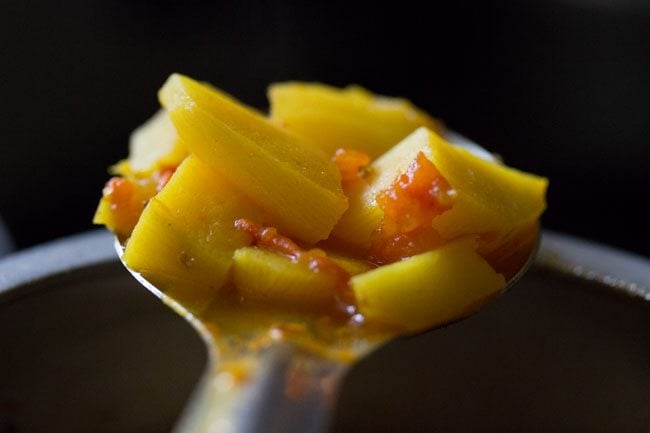
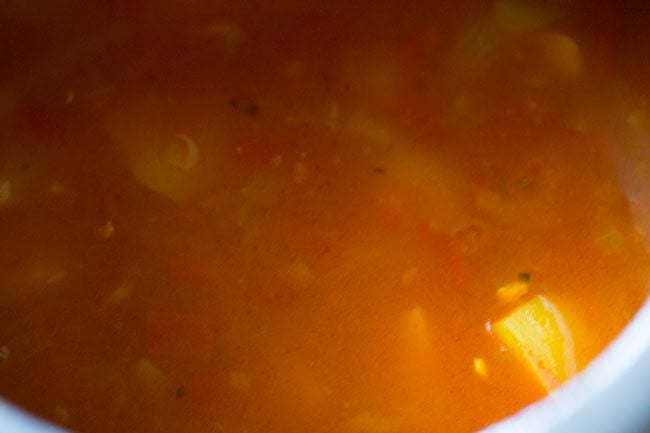
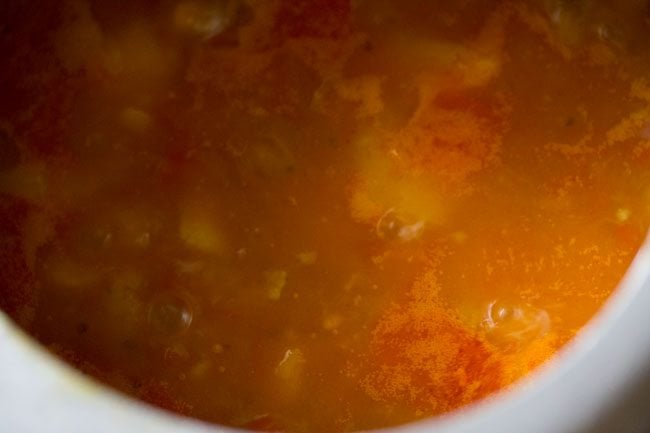
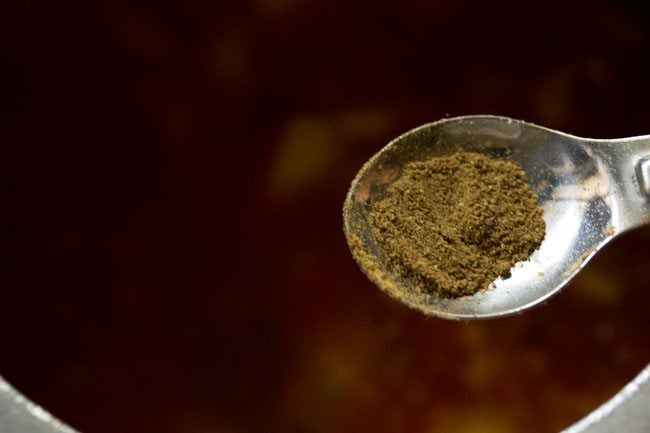

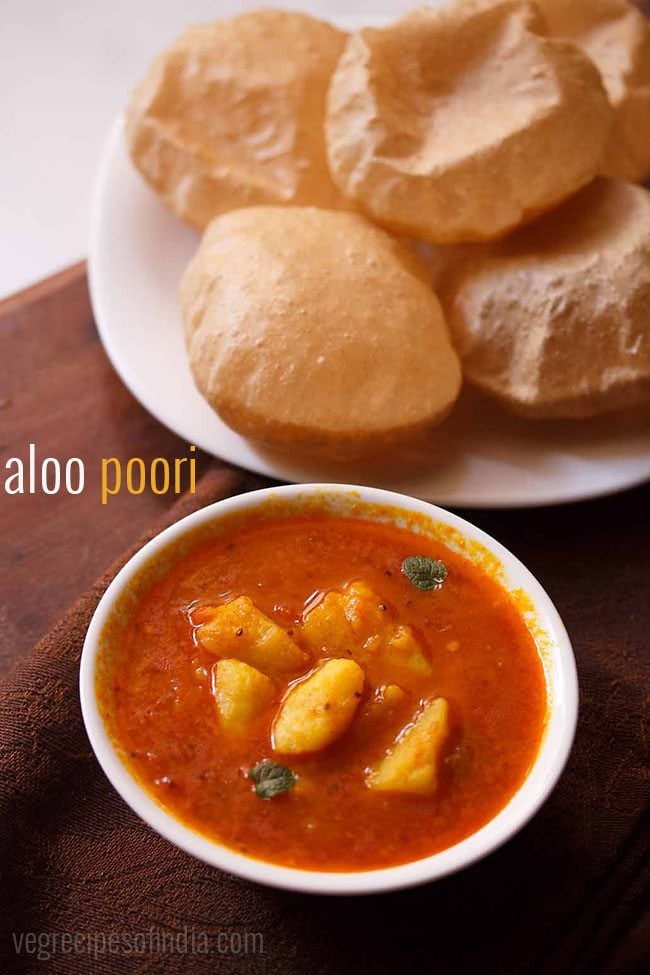
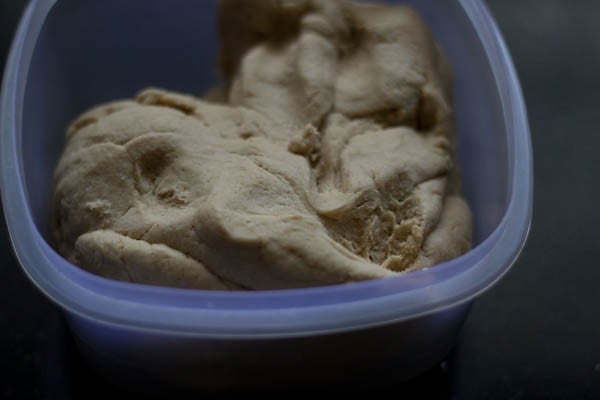
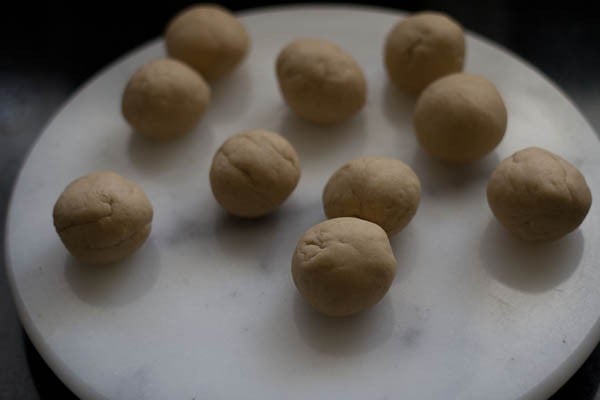
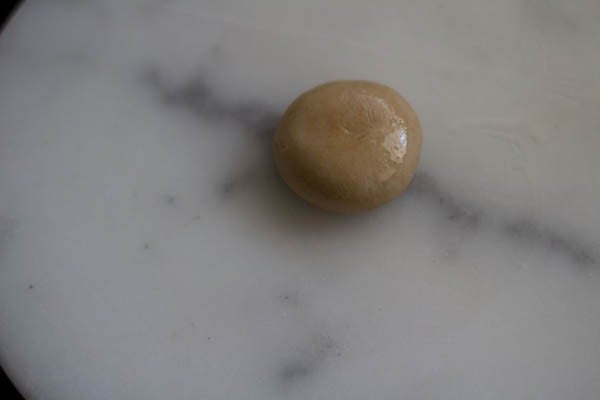

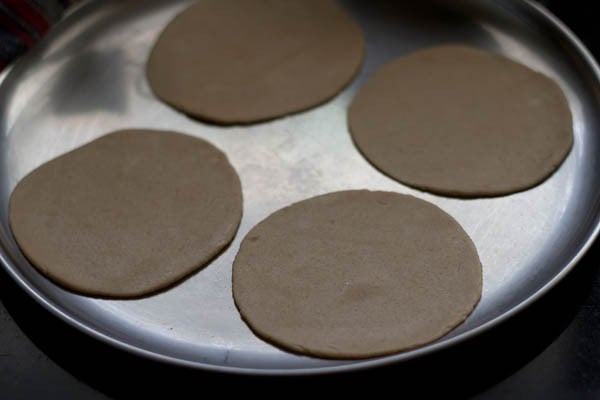
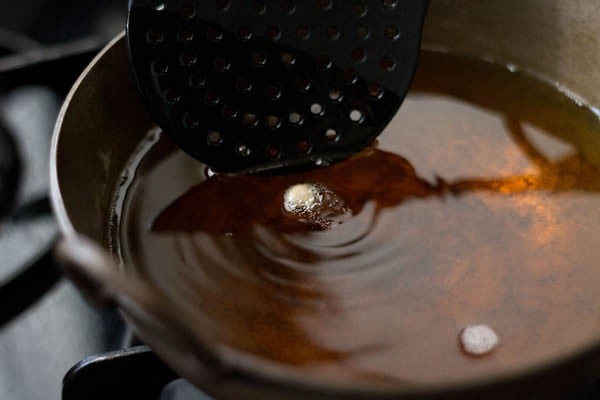
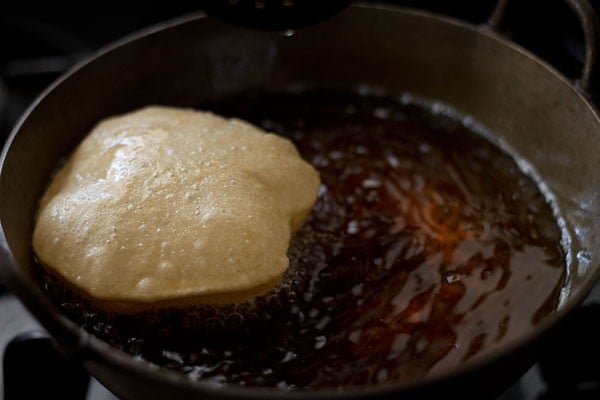
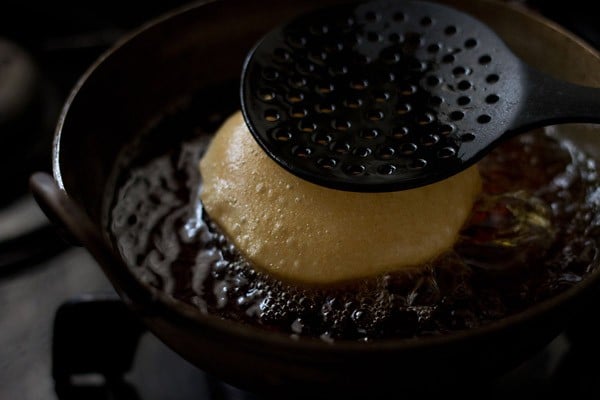
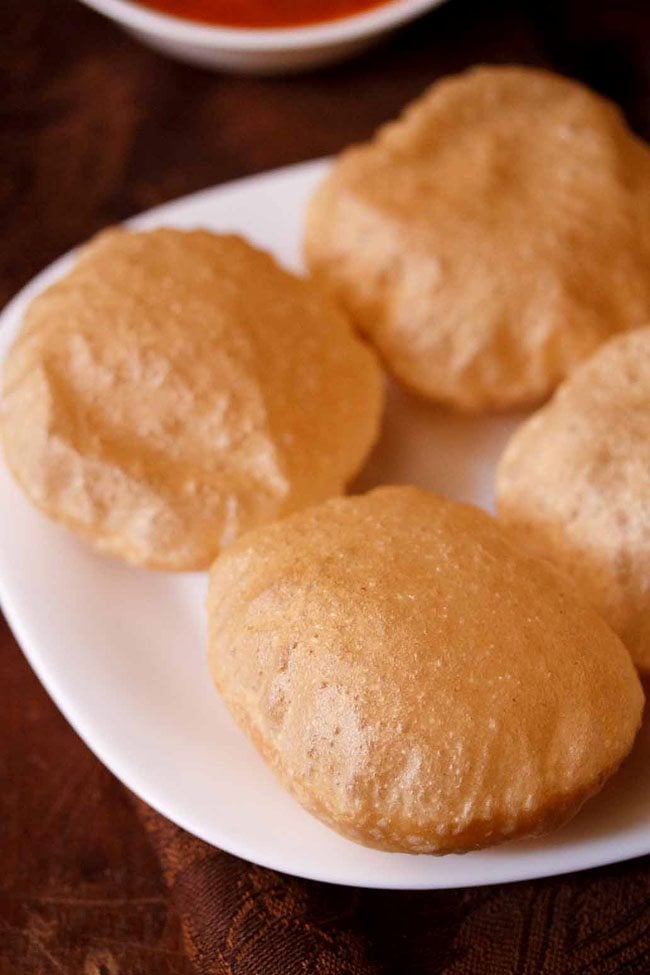
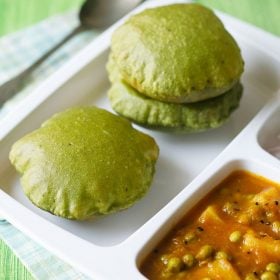
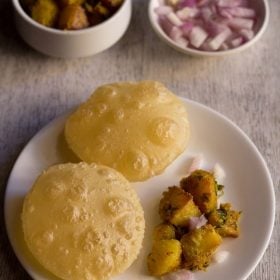
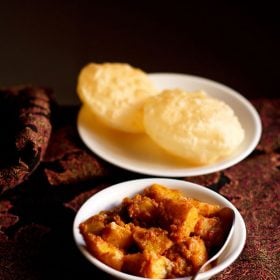
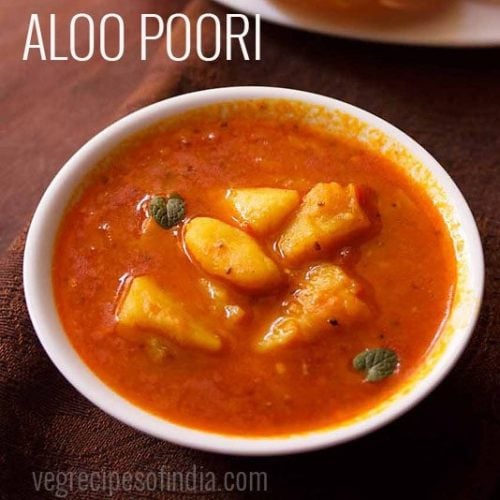
title: “Aloo Puri Aloo Poori Potato Curry With Indian Fried Bread” ShowToc: true date: “2024-09-26” author: “Patrick Steiner”
About Aloo Puri
Aloo puri is a hearty, satisfying vegan breakfast that is a favorite weekend treat at our house. Aloo (Hindi for “potato”) refers to the curry portion of the meal, while Puri (or poori) refers to the the crisp fried breads the curry is served with. This recipe comes from my mother-in-law, and it is one of her most treasured family recipes. She considers it her best aloo sabzi recipe (sabzi means “cooked vegetables”), and the whole family simply adores it. The combination of aloo puri with sooji halwa is very popular in North India. Usually this meal would be served for breakfast, but you can have it any time of the day. While the recipe takes a bit more time than I usually have to spend on breakfast for a regular weekday, I would eat this and Maharashtrian Poori Bhaji every weekend if I could. I might not get anything done afterwards – it’s a heavy meal – but the flavor might just be worth it! In most Punjabi homes, Sunday breakfast includes some kind of fabulous bread like in this aloo poori, bread pakora, or different Paratha like:
Aloo ParathaOnion ParathaGobi ParathaPaneer Paratha
The most important ingredient in this delightful curry is ajwain (carom seeds). They not only subtly flavor the whole dish, they are also an excellent digestive aid with myriad other health benefits. The cozily spiced potato sabzi is served steaming hot with freshly puffed Puri, straight out of the kadai, along with some chopped onions and lemon wedges. Once you try this amazing Punjabi breakfast, I have a feeling you’ll fall in love. Want more such recipes? You can also check this South Indian style Poori Masala for a different regional take on this famous breakfast.
How to Make Aloo Poori
Prepare Aloo Sabzi
- Heat oil in a 2 litre stovetop pressure cooker. Add 1 teaspoon ajwain (carom seeds) and fry them till they splutter.
- Now add ⅓ cup chopped onions (about 1 medium-sized onion, or 50 grams).
- Sauté onions on medium-low heat until they soften.
- Then add 2 teaspoons finely chopped ginger (1-inch ginger), 1 teaspoon finely chopped garlic (2 to 3 small to medium garlic cloves) and 1 to 2 chopped green chillies. Sauté for a few seconds till the raw aroma of the ginger and garlic goes away.
- Add 1 heaped cup chopped tomatoes (about 2 medium to large tomatoes or 200 grams).
- Stir and mix well.
- Sauté till the tomatoes become soft and pulpy.
- Add ½ teaspoon turmeric powder, 1 pinch asafoetida (hing) and 1 teaspoon red chilli powder or ½ teaspoon cayenne pepper. If you are gluten free, please be sure to check the label of your asafoetida. Many commercially available brands are processed with wheat.
- Mix well.
- Now add 2 heaped cups peeled, diced potatoes (about 5 medium-sized potatoes or 350 grams).
- Stir and mix well.
- Add 2 cups of water.
- Next add salt to taste and mix well.
- Pressure cook for 3 to 4 whistles on medium heat, or till the potatoes are done (fork tender). When the pressure drops naturally in the cooker, then only open the lid.
- Check to see if the potatoes are tender. In the below photo, the potatoes are cooked well.
- Open the lid and mash a few cooked potatoes against the sides of the cooker.
- Simmer for a few minutes to thicken. The starch from the potatoes will act as a natural thickener for the gravy.
- Once done, sprinkle in ½ teaspoon garam masala powder.
- Also, add 1 teaspoon dry mango powder (amchur powder). Mix well and garnish with some coriander leaves.
- Serve the Aloo Sabzi hot with Puri.
How to make Make Puri
Make Poori Dough
- Knead 2.5 to 3 cups whole wheat flour (atta) into a stiff dough adding water as needed and 1 teaspoon oil.
- Make small balls of the dough.
- Apply oil to the dough ball. The reason you apply oil instead of dusting with flour is so that while frying, the oil stays clean and you won’t see dark burnt flour particles inside the oil.
- Roll the dough evenly into circles that are neither too thin nor thick.
- Place the rolled poori on a plate and cover with a clean kitchen towel so they don’t dry up.
Fry Puri
- Heat oil in a deep frying pan or kadai. When the oil is sufficiently hot (it should bubble around the handle of a wooden spoon), then drop a small dough ball into the oil. If the dough ball rises steadily and briskly to the top, then the oil is sufficiently hot to fry the puri. Otherwise, allow it to continue to heat up before frying the puri. Troubleshooting Tip: If the dough ball rises slowly or is still at the bottom, then the oil is cold; if it rises super fast, then the oil is too hot.
- Add one puri at a time. It will puff up soon. Gently nudge with a slotted spoon which helps in puffing the puri evenly.
- Once the bottom side is golden, then turn over the puri and gently press it down with a slotted spoon, moving it in a circular motion. Fry the puri till golden brown all over. Remove the poori to a plate lined with paper napkins to remove excess oil. Fry all pooris this way. If the oil becomes too hot, then lower the temperature by reducing the heat and vice versa. Fry the puri in batches.
- Serve the hot puri with the aloo sabzi, alongside sliced onions and some lemon wedges. Please be sure to rate the recipe in the recipe card or leave a comment below if you have made it. For more vegetarian inspirations, Sign Up for my emails or follow me on Instagram, Youtube, Facebook, Pinterest or Twitter. Palak Puri | Palak Poori Luchi Recipe | Bengali Luchi Alur Dom | Bengali Aloo Dum This Aloo Puri Recipe from the archives first published in May 2012 has been republished and updated on November 2022.

































